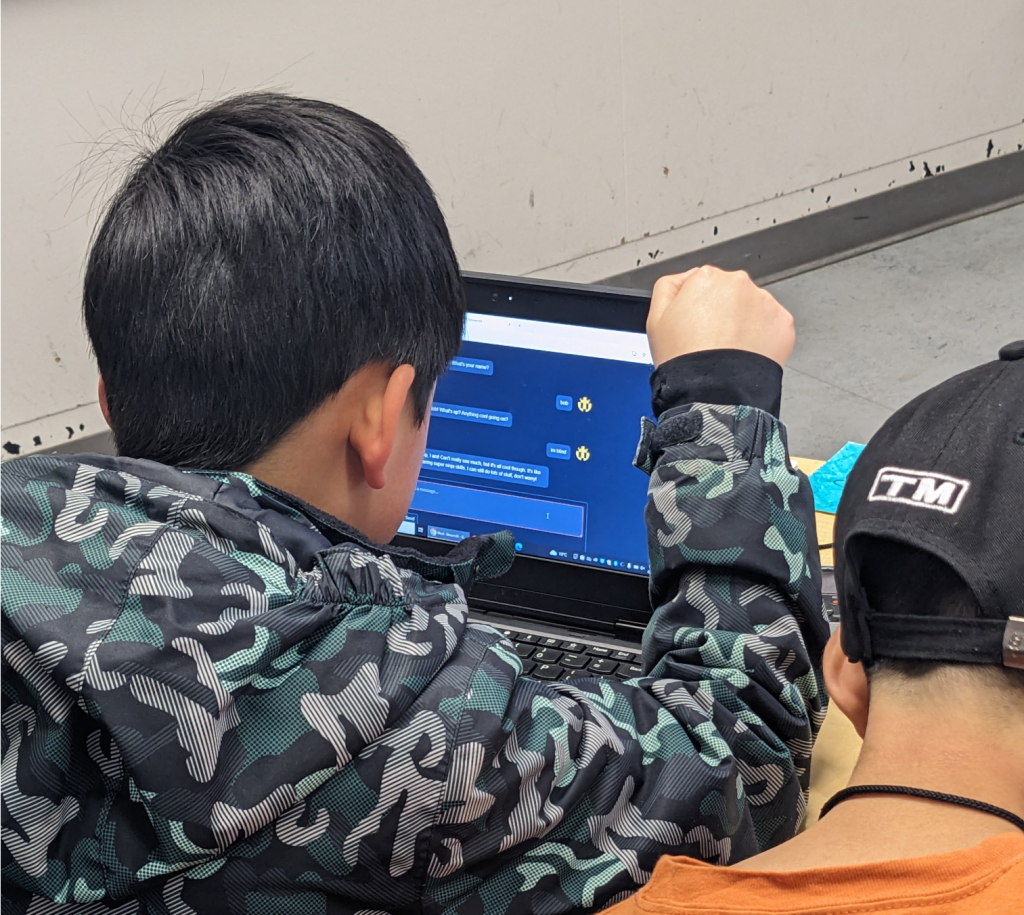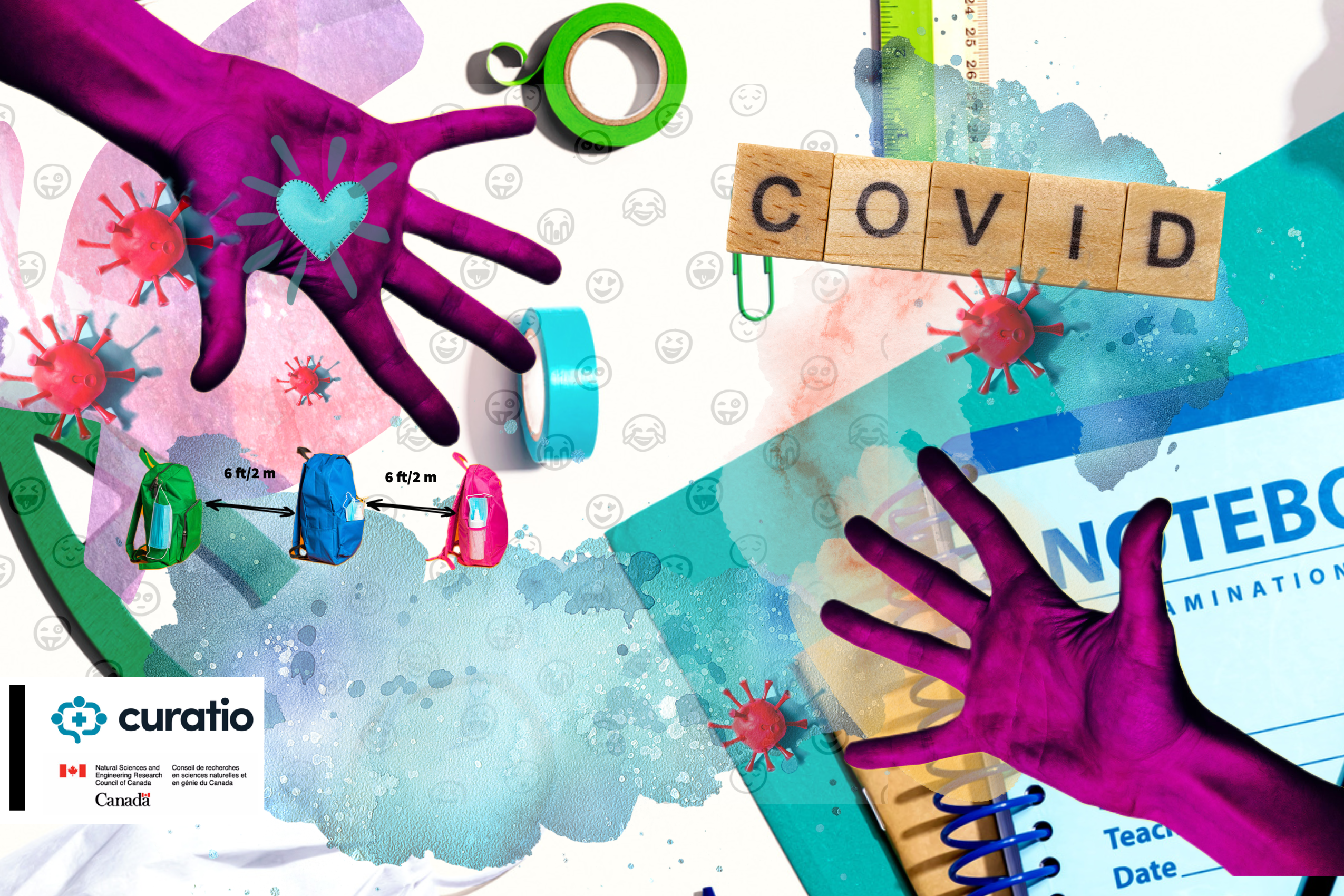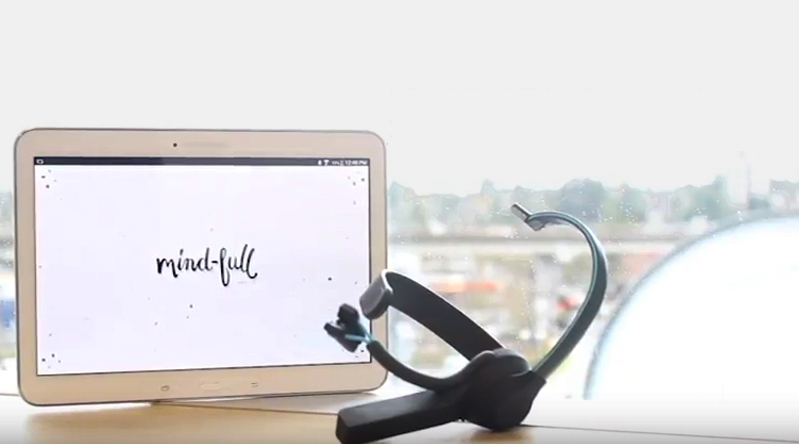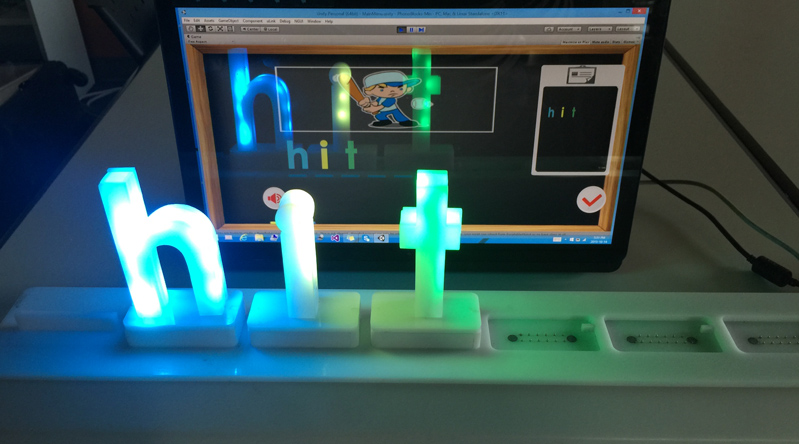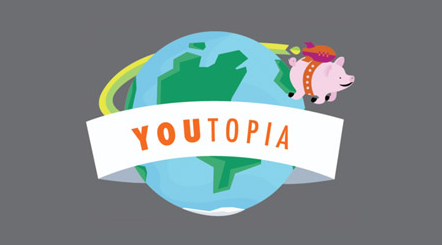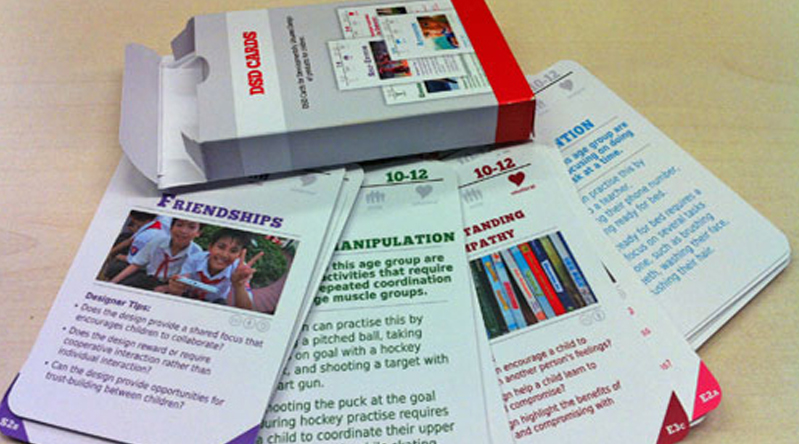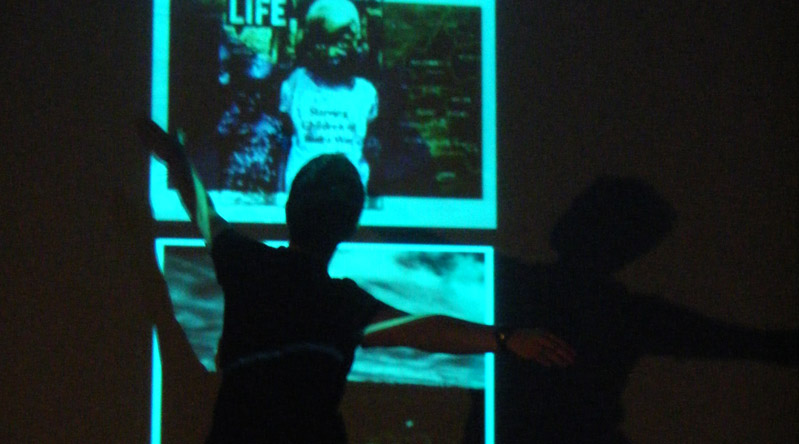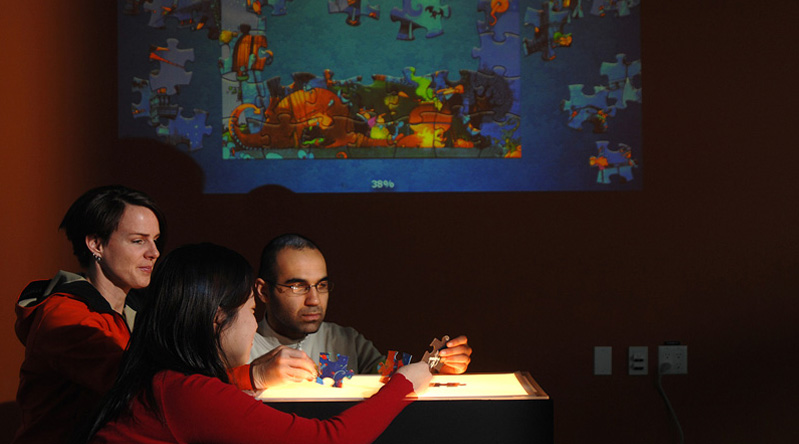Supporting Children to Develop AI Literacy through Experiential Learning
Funded by SFU Small SSHRC Explore, SSHRC Insight, NSERC Discovery
Young people today face the rapid evolution and potential disruptions of AI technologies. Studies on the negative impacts of AI on children primarily focus on data-related issues such as privacy, security, bias, and surveillance. There’s a notable gap in understanding how to support the development of critical reflection about AI during literacy skills development in middle school children. Critical reflection encompasses analyzing AI’s socio-political underpinnings and inherent ethical issues and reflecting critically when using AI as a consumer of AI-created information and as creator of AI solutions. We explore ways to support children to develop AI literacy through hands-on learning approaches including design-based learning, empathetic design and speculative design.
Virtual Reality Emotion Regulation for Youth
Funded by NSERC Discovery (Antle), NSERC Post-Doctoral Fellowship (Kitson)
Emotion regulation, the ability to modulate the intensity and duration of emotional states, has been explored as a trans-diagnostic intervention to improve mental health. Youth aged 12-15 use less adaptive or maladaptive emotion regulation strategies (e.g., suppression) that can contribute to depression or anxiety disorders. Thus, training adaptive emotion regulation skills is crucial for this age group. This project investigates the feasibility of virtual reality (VR)’s mechanisms for supporting emotion regulation with youth.
Wearables Critical Making Workshop
Sites: Conducted remotely with children, ages 12-14, in Atlantic Canada
Partner: Brilliant Labs (www.brilliantlabs.ca)
Funded by SFU Innovates Wearables (Antle/Murai), SSHRC Post-Doctoral Fellowship (Kitson), SSHRC Insight (Antle) and NSERC Discovery (Antle)
The rapid adoption of smart wearables, such as smartwatches and fitness trackers, raises ethical issues as youth are increasingly being tracked, monitored and given feedback on a growing number of measures. There is a need to provide support for youth to learn about the potential impacts and express their concerns as part of their critical technological literacy curricula so that they can make informed decisions about their technology use. This project focuses on the design and evaluation of a remote critical making workshop for youth. This project contributes to the investigation of ways critical making can intentionally support children’s reflection on and engagement with ethical issues through technology making.
No Child Alone
Sites: Conducted remotely with children, ages 9-11, and their teachers at Burnaby School District, Canada and children’s parents in British Columbia, Canada + industry partner employees in Canada.
Partner: Curatio Networks Inc. (www.curatio.me)
Partner: Burnaby School Board and Montecito Elementary School (Canada)
Funded by NSERC Alliance Grant and SSHRC Insight
The goal of the The No Child Alone project combines the expertise of Dr. Antle’s child-centred design research with Curatio Networks Inc and the Burnaby School Board (Canada) to design and develop a COVID-19 support system for children (10-18 years) and their teachers, parents and caregivers. The No Child Alone-Curatio system will enable those who care about children’s learning, development and mental health to effectively and efficiently work with children to overcome social-emotional and mental health challenges related to the impact of COVID-19 in Canada, and internationally.
The Mind-Full Series: Neurofeedback Tablet Games for Self Regulation
Sites: Nepal House Kaski, Pokhara, Nepal and Burnaby School District, Canada
Funded by NSERC Discovery, NSERC Accelerate, GRAND NCE and MSR
This project began in conjunction with Nepal House Society, an NGO that works with children living in poverty in Pokara, Nepal. The main research outcome is to develop EEG headband and tablet based neurofeedback games that help children who have suffered trauma, or have challenges with attention or anxiety, to improve their ability to self-regulate their anxiety and attention in order to learn more effectively at school.
ʔeləw̓k̓ʷ – Belongings: A Tangible Table in c̓əsnaʔəm, the city before the city
In conjunction with “Making Culture Lab.” Funded by SSHRC Insight (Antle), GRAND NCE (Antle/Hennessey), the xʷməθkʷəy̓əm (Musqueam) Indian Band, the Museum of Vancouver, and the Museum of Anthropology at the University of British Columbia
Belongings uses tangible replicas of xʷməθkʷəy̓əm (Musqueam) belongings excavated from c̓əsnaʔəm, as well as contemporary objects that are a part of everyday Musqueam life to represent the long history of salmon fishing and the continuity of related knowledge at c̓əsnaʔəm. Drawing on contemporary community voices and Musqueam’s ancestral language hən̓q̓əmin̓əm̓, each replica has its own story to tell.
PhonoBlocks: Tangible Reading Systems for Children With or At-Risk for Dyslexia
Sites: Burnaby School District, Canada, and Taiyuan School District, Shanxi, China
Funded by SSHRC Insight, GRAND NCE and McDonnell Foundation
New technologies such as tangibles and touch tablets with haptic feedback, may provide solutions for helping dyslexic children learn to read. Tangible letters enable encoding information using multiple representations that can be interacted with using vision, hearing and touch. In this project we are exploring the relationship between specific tangible features and interactional behaviors that improve learning. The main research outcome is to develop a comprehensive tangible-learning-design framework for this space and to determine if any of these strategies improve reading processes and outcomes for children with or at-risk for dyslexia.
Youtopia: Collaborative Tangible Learning
Site: Stratford Hall International Baccalaureate World School, Vancouver, Canada
Funded by SSRHC, NSERC, PICS and GRAND NCE
Youtopia is a hybrid tangible and multi-touch land use planning activity for elementary school aged children. Youtopia was developed to investigate issues surrounding how to design and evaluate children’s collaborative learning applications using digital tabletops. In particular we are looking at how the interface design supports in depth discussion and negotiation between pairs of children around issues in sustainable development. Youtopia was also developed around a model of behavior change called “Emergent Dialogue" that may enable children to discuss how they own values, attitudes and behaviors impact sustainable living.
Developmentally Situated Design (DSD)
Funded by SSHRC Int. Opp. Fund and GRAND NCE. Winner of the DEVICE (Design for Vulnerable Generations) Best Practice Award
There is a wealth of theoretical knowledge about the developmental abilities and skills of children. However, this knowledge is not readily accessible to designers of interactive products. In this project, we are developing and evaluating developmentally situated design (DSD) cards. DSD cards are a design tool that makes age specific information about children’s developing cognitive, physical, social, and emotional abilities readily accessible for designers.
Exploring Metaphor in Embodied Interaction
Funded by NSERC
What does it mean for interaction with computers to be intuitive? Intuitive thinking is fast, unconscious and automatic. Rational thinking is slow, deliberate and conscious. Some intuitive thinking may be grounded in bodily experiences, as explained by conceptual metaphor theory. This research explores how the structures between image schemata and metaphorically related concepts can be used to design interaction with new systems that are intuitive to use and may bootstrap abstract thinking through movement…
EventTable: How We Think with Our Hands
Site: Telus World of Science, Vancouver, Canada
Funded by SSHRC RDI, NSERC RTI and GRAND NCE
Humans are masters of making difficult cognitive tasks easier by using their hands to structure the environment – think of how you might leave objects you need to take with you by the door or make a pile of edges pieces in a jigsaw puzzle…
Futura: The Sustainable Futures Game
Site: Winter Olympics 2010 Cultural Site, Surrey, Canada
Funded by GRAND NCE, PICS and SSHRC 4A
What key factors in the design of a collaborative, multi-touch tabletop games create opportunities for learning, reflection and discussion? We use four theoretical perspectives as lenses through which we conceptualize our design intentions and inform our analysis. These perspectives are: experiential learning, constructivist learning, collaborative learning, and game theory.

